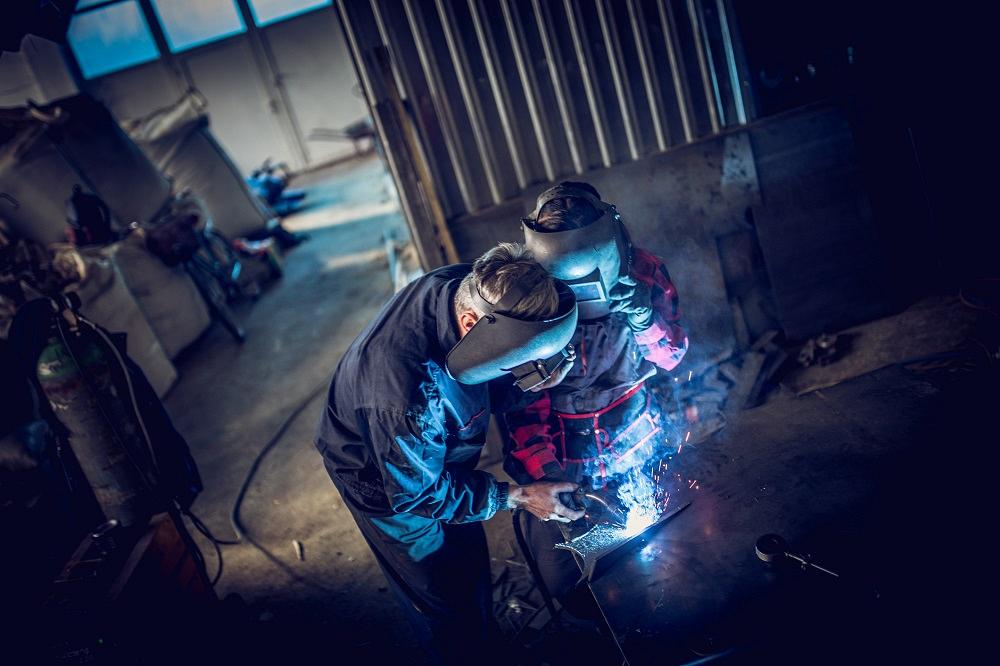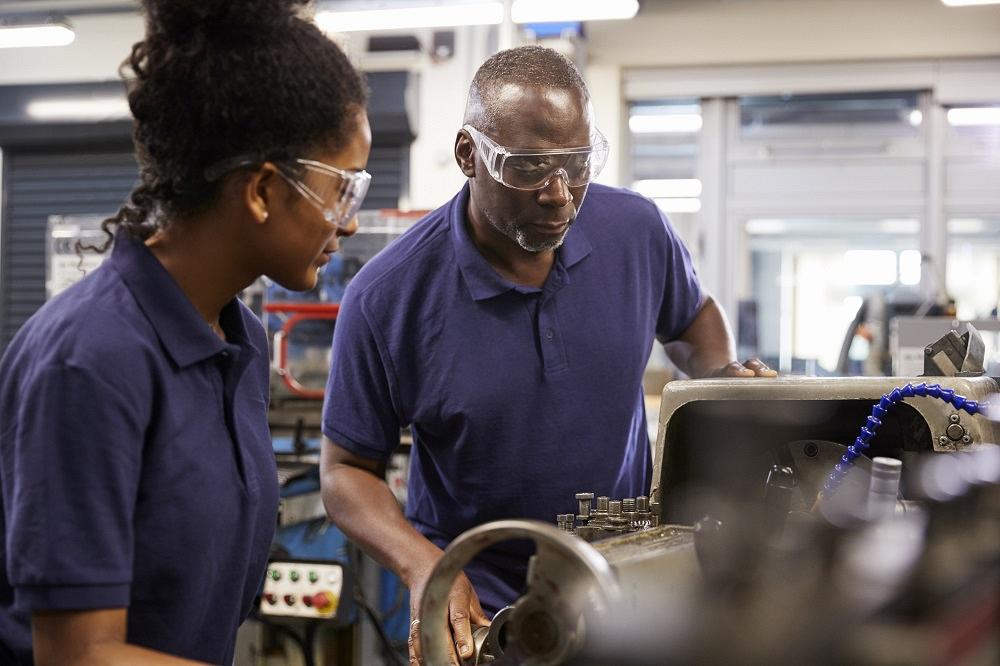Contributing Writer
- FMA
- The Fabricator
- FABTECH
- Canadian Metalworking
Categories
- Additive Manufacturing
- Aluminum Welding
- Arc Welding
- Assembly and Joining
- Automation and Robotics
- Bending and Forming
- Consumables
- Cutting and Weld Prep
- Electric Vehicles
- En Español
- Finishing
- Hydroforming
- Laser Cutting
- Laser Welding
- Machining
- Manufacturing Software
- Materials Handling
- Metals/Materials
- Oxyfuel Cutting
- Plasma Cutting
- Power Tools
- Punching and Other Holemaking
- Roll Forming
- Safety
- Sawing
- Shearing
- Shop Management
- Testing and Measuring
- Tube and Pipe Fabrication
- Tube and Pipe Production
- Waterjet Cutting
Industry Directory
Webcasts
Podcasts
FAB 40
Advertise
Subscribe
Account Login
Search
Department of Labor plans to expand apprenticeship options
Industry associations might have the chance to create programs to help their manufacturing member companies
- By Stephen Barlas
- August 9, 2019

Three metalworking apprenticeship programs were among the 23 the U.S. Department of Labor announced funding for, to the tune of $183.8 million. Getty Images
The U.S. Department of Labor (DOL) will be establishing a new apprenticeship credentialing program to rival its current program, which will continue to operate.
The new program will provide industry groups with more autonomy and authority to create industry-recognized apprenticeship programs that provide a new pathway to employment. The program will co-exist with the current registered apprenticeship program that consists of programs either approved by the DOL or a state apprenticeship board.
The new option would encompass programs certified by a standards recognition entity, a nongovernment body which would have to be approved by the DOL and meet its standards for high-quality programs. For example, an industry-recognized group might seek to set standards for automobile or aircraft manufacturing or for an occupational area such as information security analytics.
At the end of 2018, the U.S. had more than 7.3 million job openings. Some openings go unfilled because not enough workers with needed skills (such as tool designers) can be found, according to the DOL.
Meanwhile, three metalworking apprenticeship programs were among the 23 the DOL announced funding for, to the tune of $183.8 million. (Simultaneously, it issued the proposed rule on the industry-recognized programs.) These three programs are approved under the current registered regime and are college-centered in conjunction with trade associations. The three in which the National Institute of Metalworking Skills will participate are Pima County Community College District in Arizona, St. Louis Community College in Ohio, and Lorain County Community College also in Ohio.
In addition, the DOL intends to fund up to 30 apprenticeship grants, with awards ranging from $500,000 to $6 million. Grants may be local/regional, statewide, or national in scale, and funding will depend on the proposed geographic scope of the apprenticeship project.
Grant funds will be awarded to apprenticeship programs that are supported by partnerships of public- and private-sector entities. The full solicitation is available on grants.gov.
Smart Manufacturing Legislation Moves Forward in Senate
Legislation often takes a couple of Congresses before it gains momentum. That may be the case with the Smart Manufacturing Leadership Act, which passed the Senate Energy and Natural Resources Committee in July. It was introduced in the last two sessions of Congress but did not move forward.
The bill (S. 715) has strong bipartisan support, and providing stimulus to the U.S. manufacturing sector is a popular cause on Capitol Hill. The bill authorizes the secretary of energy to develop a national smart manufacturing plan and to provide assistance to small and medium-sized manufacturers in implementing smart manufacturing programs.
The new program calls for the use of competitive grants to states to fund this technological transition. The grants would help the states to provide small and medium-sized manufacturers access to state-shared supercomputing facilities, to train companies on how to integrate advanced technologies into their businesses, and to conduct demonstrations that illustrate the benefits of smart manufacturing.
The Smart Manufacturing Leadership Act has been endorsed by several industry and environmental stakeholders, including the National Association of Manufacturers, Sheet Metal & Air Conditioning Contractors’ National Association, and the Air-Conditioning, Heating, and Refrigeration Institute. Reps. Peter Welch, D-Vt., and Tom Reed, R-N.Y., introduced companion legislation in the House of Representatives.
subscribe now

The Fabricator is North America's leading magazine for the metal forming and fabricating industry. The magazine delivers the news, technical articles, and case histories that enable fabricators to do their jobs more efficiently. The Fabricator has served the industry since 1970.
start your free subscriptionAbout the Author

Stephen Barlas
- Stay connected from anywhere

Easily access valuable industry resources now with full access to the digital edition of The Fabricator.

Easily access valuable industry resources now with full access to the digital edition of The Welder.

Easily access valuable industry resources now with full access to the digital edition of The Tube and Pipe Journal.
- Podcasting
- Podcast:
- The Fabricator Podcast
- Published:
- 04/16/2024
- Running Time:
- 63:29
In this episode of The Fabricator Podcast, Caleb Chamberlain, co-founder and CEO of OSH Cut, discusses his company’s...
- Trending Articles
Capturing, recording equipment inspection data for FMEA

Tips for creating sheet metal tubes with perforations

Are two heads better than one in fiber laser cutting?

Supporting the metal fabricating industry through FMA

Omco Solar opens second Alabama manufacturing facility

- Industry Events
16th Annual Safety Conference
- April 30 - May 1, 2024
- Elgin,
Pipe and Tube Conference
- May 21 - 22, 2024
- Omaha, NE
World-Class Roll Forming Workshop
- June 5 - 6, 2024
- Louisville, KY
Advanced Laser Application Workshop
- June 25 - 27, 2024
- Novi, MI



























